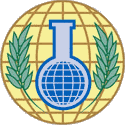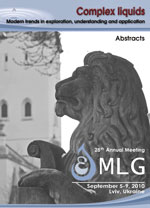Nanosize supramolecular aggregates in methanol: from melting point to supercritical state
Vladimir Durov
Quasichemical models [1,2] provide a unified molecular approach to describe the supramolecular structure and properties of liquid systems in a wide range of parameters of state, with negligible computational cost. This approach gives a new insight into long-range molecular correlations due to specific interactions (e.g. hydrogen bonding).
Mean squares of distances between oxygen atoms of terminal molecules of chain-like aggregates are considered as characteristics of length scale of connectivity and correlations of molecules in liquid. Equations for number-, weight- and z-average mean-square distances between oxygen atoms of terminal molecules of chain-like aggregates of alcohols as functions of structural and thermodynamic parameters of aggregation are derived.
Mean-square distance between oxygen atoms of terminal molecules of chain-like aggregates of methanol is calculated as function of the number of molecules. Temperature dependence of number-, weight- and z-average distances between oxygen atoms of terminal molecules of chain-like aggregates of methanol is calculated in the wide range from melting point to critical point [3]. The average size of the aggregates of methanol at ambient conditions is found to be about several nanometers, while approaching melting point it can reach tens of nanometers.
This work was supported by the Russian Foundation for Basic Research, project N 10-03-01164 and by the Program of Ministry of Education and Science of the Russian Federation "Development of scientific potential of higher education institutions (2009-2010)", project N 2.1.1/3305.
References
- V.A. Durov, Pure Appl. Chem., 76, 1 (2004).
- V.A. Durov, J. Mol. Liq., 118, 101 (2005).
- V.A. Durov, I.Yu. Shilov, J. Mol. Liq., 136, 300 (2007).



